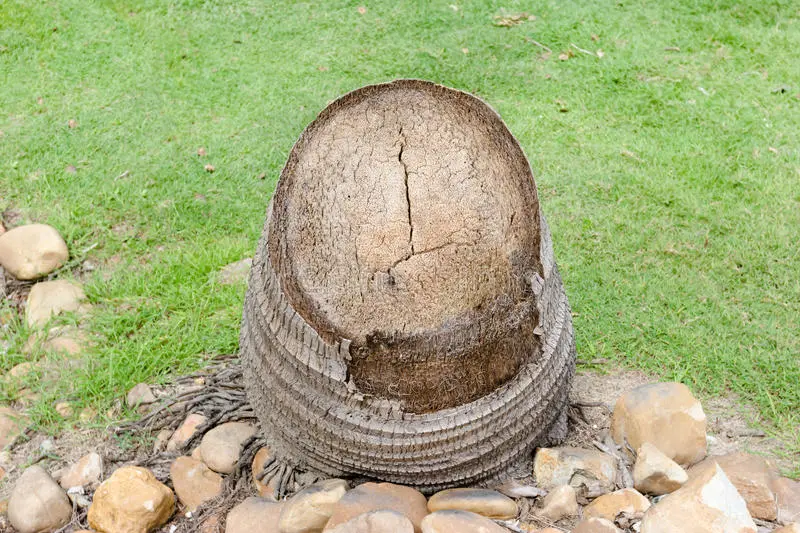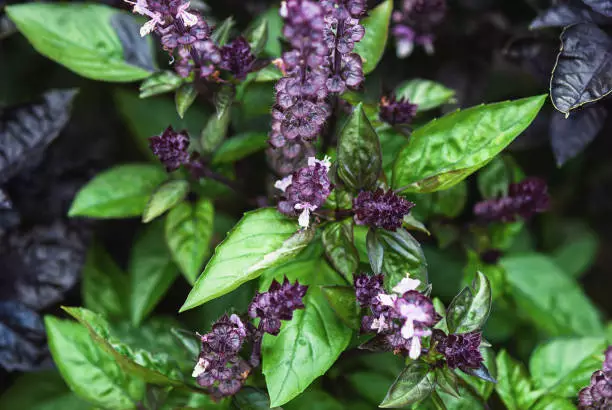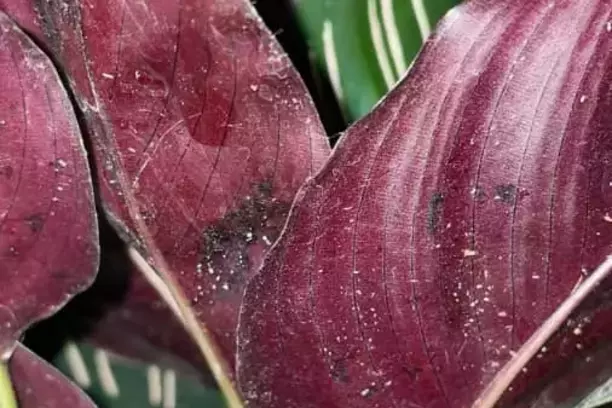Healthy sago palms have dark olive-green leaves about 30 to 50 inches and make great indoor plants. When the fronds start to turn yellow, it is a sign something is wrong with the plant – usually a disease or improper care. So, what causes sago palm to turn yellow and how do you fix it?
A sago palm turning yellow can be a sign of overwatering, underwatering, root rot, too much fertilizer, or transplant shock. Replant the tree in a well-draining medium or add compost to the soil then create more drainage holes to fix the yellowing sago fronds. Do not remove the yellowing leaves.
If you’ve planted your sago palm in a pot, check the roots for root rot – one of the most common palm tree diseases that causes the leaves to turn yellow and the tips black or brown.
RELATED: WHAT ARE THE SIGNS OF PALM TREE DISEASES AND HOW TO PREVENT IT
Why is my sago palm turning yellow?
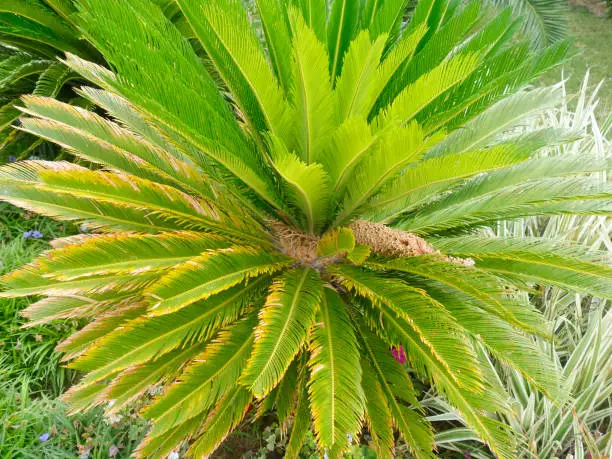
The most common reason why sago palms turn yellow is moisture stress, which can be a result of underwatering or underwatering. Other reasons include mineral deficiency, sunburn, too much fertilization, cold damage, transplant shock, and pests among other reasons.
Mineral deficiency
Manganese, magnesium, and nitrogen deficiency in sago palms cause yellow leaves. Magnesium is the main element that’s important for chlorophyll production and photosynthesis.
Your sago palm will start to appear pale if the soil is deficient in important minerals, especially magnesium and nitrogen. The main signs of magnesium deficiency in palm trees include the following:
- Yellow streaks along leaf margins
- Older leaves are affected the most by the yellow discoloration
- Slow growth
- Yellowing that does not recover
If your palm trees are turning yellow due to nutrient deficiency, carry out a soil test to determine the deficient nutrient. Apply Biotech Manganese Sulfate Monohydrate Powder fertilizer to fix the yellow discoloration in your sago palms.
Overfertilization
While mineral deficiency is a major cause of leaf discoloration in sago palms, beware of overfertilization as it can also lead to the same symptoms. Too much fertilizer or applying fertilizer to wet foliage causes fertilizer burn, a condition characterized by scorching or burning of the plant’s foliage.
The symptoms include yellowing of leaves and root damage, which can start showing as soon as 24 hours after applying the fertilizer. Feed your sago palm with an organic water-soluble fertilizer not more than 4 times a year whether you’re growing them indoors or outdoors.
I would recommend using Epsom salt fertilizer for your palm trees, which you can apply 2-3 times per year to prevent yellowing from magnesium deficiency.
RELATED: HOW TO USE EPSOM SALT FOR PALM TREES
Sunburn
Sago palms like bright indirect light to grow healthy especially indoors. However, too much sun can lead to sunburn which often occurs when you move potted sago palms from indoors to outdoors during the summer period.
Some of the sunburn symptoms to look for in your sago palm include dark burn spots or yellowing on leaves that receive direct sunlight. You might also see dark tips on the fronds of your palm trees when they’re receiving too much direct sunlight.
Underwatering
Water is one of the three things needed in photosynthesis as it provides the hydrogen needed to form glucose. If your sago palms are not getting enough water, they will start dropping extra leaves to prevent transpiration and conserve the water they have.
Before your sago palm drops its leaves due to underwatering, they turn yellowish since they are not benefiting from photosynthesis. Other signs of underwatering look for include dry soil accompanied by yellowing and dropping of older leaves.
Overwatering
Besides underwatering, overwatering in palm trees can also cause leaves to turn yellow. If the soil has poor drainage, applying too much water will lead to waterlogging and prevent roots from breathing and absorbing nutrients for the plant.
Some of the effects of waterlogged soils include poor soil aeration, change in soil temperatures, and altered soil nutrients.
Cold damage
If you are sago palm trees are turning yellow during winter, it might be a sign of cold damage. Exposing your sago palms to intense cold will cause outright yellowing of leaves or transparent spots between veins.
Cold drafts cause sago palms to break down chlorophyll into smaller molecules that eventually disappear. As the chlorophyll’s green pigment reduces, other pigments within the leaves start to show their colors.
Transplant shock
Transplant shock refers to a number of stresses that occur when young sago palms are transplanted. The seedlings fail to root well in the new environment leading to the yellowing of the leaves.
When the roots fail to root properly, it means that even the uptake of water and nutrients is compromised.
Yellowing can also occur in newly potted palm trees due to poor acclimatization and poor watering, inadequate or too much light.
Low humidity
Exposing your sago palms to low humidity for a prolonged period may cause yellowing of fronds and leaves. Extremely low humid environments mean there is no water for photosynthesis. Since the plant won’t survive without photosynthesis, your houseplants will start utilizing water stored in their leaves. This will result in yellowing of the leaves and eventually wilting of the leaves.
Pests and diseases
Last but not least, pests and insects might also be another reason you are seeing yellow leaves on your sago palms. Pests such as aphids and spider mites turn fronds yellow when they bite the plant. Signs to look for include sticky substances that drip onto the sago palm fronds and visible webs left by mites.
RELATED: HOW TO GET RID OF SPIDER MITES ON MAJESTY PALM
How to fix a yellow sago palm
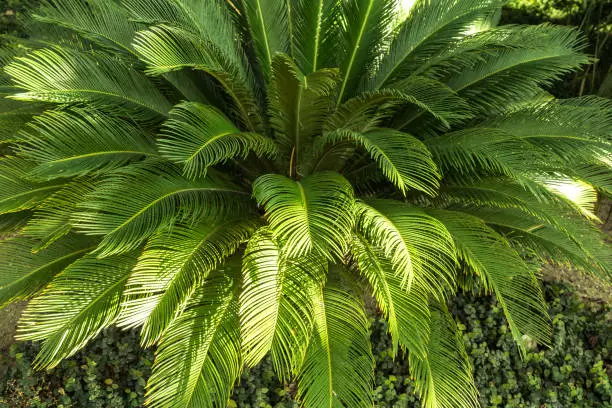
Leaf discoloration can be fixed especially if it is not extensive and prolonged. For the most part, applying a slow-release fertilizer with potassium, magnesium, and nitrogen should stop the sago palm from turning yellow. There’s also more you can do to treat the pale leaves depending on the cause.
Here are ways to fix a sago palm that’s turning yellow:
1. Apply a magnesium supplement
Perform a soil test where sago palms are planted to determine deficient nutrients (usually magnesium) then dissolve a magnesium-rich supplement such as Epsom salt in water. Apply to the soil to fix the deficiency and help sago palms grow green again.
Other slow-release fertilizers you can use for your palm trees are Miracle-Gro Shake’n Feed and Alpha Chemicals Potassium.
2. Move your sago palm to a warm location in winter
To tackle the cold draft problem, move your potted sago palms to a warmer location away from drafty doors and windows. If the sago palms are planted outdoors, use frost cloths to protect your plants.
Some of the best frost clothes you can consider include REMIAWY Plant Covers Freeze and Alinnart Plant Covers Freeze Protection.
3. Move the plant away from direct sunlight
If the yellowing is caused by sunburn, move your potted sago plants to a new location in the room away from direct sunlight or artificial light. If you don’t want to move your plants, place a light curtain over the window to filter out strong sun rays that are causing the yellowing in sago palms.
4. Water sago palms once a week
Overwatering and underwatering are unhealthy practices for palm trees. To fix yellowing leaves in sago palms due to moisture stress, water your sago palms once every 1-2 weeks. Check the soil with your finger and water to keep the soil moist only if the top 2-3 inches of the soil is dry.
If the soil is hardened or waterlogged due to the effects of overwatering, repot the plant to a properly draining potting mix.
5. Treat pests and diseases
If pests such as spider mites, scale, and thrips are the reason why your sago pets are turning yellow, get rid of them by spraying the plant with a neem oil solution.
Spray all the parts of the plant with this organic pesticide to cover all the parts including the undersides of the leaves where the tiny pests like to hide.
6. Apply fertilizer 2-3 times a year
You need to ensure a proper fertilization schedule to prevent the problem of overfertilization. Fertilizing potted or inground sago palms requires you to ensure evenly distributed layers throughout the plants’ growing season. Ideally, you should fertilize your plants three times per year.
7. Increase humidity for your sago palms
Raise humidity by placing water trays nearby or using a room plant humidifier. Move your potted sago palms to areas with high humidity and let them sit there for at least 5 to 10 hours.
If you don’t want to move the potted sago palms for aesthetic reasons, use a humidifier to increase the humidity around the plant. You can also consider misting but you need to take caution as it can cause fungal issues, especially if your sago palms are already weakened.
Should I remove the yellow leaves?
Because yellow leaves look unsightly, you might find yourself asking whether it’s a good idea to cut off yellow leaves. Whether or not to remove yellow leaves will depend on what you want to achieve. You can cut yellow leaves for aesthetic reasons or if you want to promote growth.
Also, keep in mind that sago palms can still bounce back. With proper care, they can still photosynthesize and regain their green color. If the yellowing is a result of mineral deficiency, you can replenish the soils and leave the plants alone until the leaves recover.
However, if the yellow leaves on your sago palms begin to wilt and die, you can go ahead to remove them. Drying or rotten leaves not only looks unsightly but can also harbor pests and pathogens.
When do sago palms grow new leaves?
A yellow leaf on a sago palm caused by nutritional deficiency will turn green again after 3 to 6 weeks. However, old yellow leaves or those that were caused by pest damage and moisture stress may not recover.
So, whether the yellowing was caused by underwatering or overwatering, moisture-stressed sago palm leaves will never return green again.
References:
[1] Timothy K. Broschat, University of Florida, Institute of Food and Agricultural Sciences: Manganese Deficiency In Palms
[2] Arnold H. Hara et al, the University of Hawaii at Manoa, CTAHR, Beaumont Agricultural Research Center Hilo Kona Extension: Cycad Scale on Sago Palm
